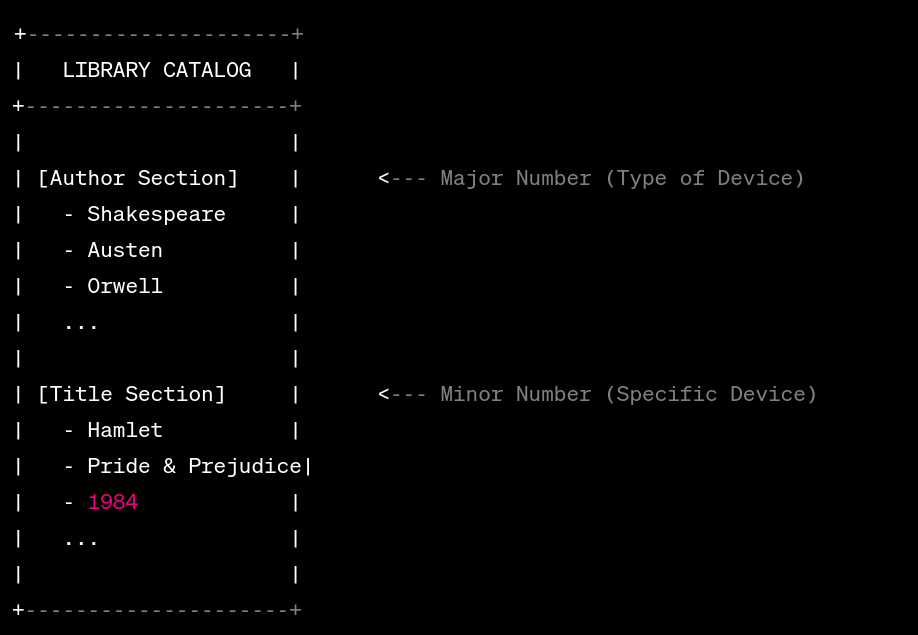
Explaining Kernel Concepts: The Library Analogy 📚
When delving into the realm of kernel programming and device drivers, certain terms might appear overwhelmingly technical. To bridge the gap, let’s use a simple and relatable analogy: the library.
Deciphering Device Files with Book Titles 📖
1. Device File Connection:
What It Means Technically: Applications ‘see’ a device through its file name. However, for the device driver, it’s all about a unique number attached to that device.
The Library Analogy: Think of a book in a library. While you recognize a book by its title, the library’s catalog system identifies it by a special number. That number ensures that every book has its unique identity.
2. Device ID/Number Composition:
What It Means Technically: Devices have a major number indicating its type (like a disk or port) and a minor number distinguishing among similar devices.
The Library Analogy: If you liken the major number to a book’s genre, the minor number becomes its order within that genre. Want a mystery novel? That’s your major. Which one? That’s your minor.
Relation: Just like pinpointing a specific book requires knowledge of its genre and order, accessing a device needs both its major and minor numbers.
Translating Data Type with Book ID 📘
1. Representation:
What It Means Technically: Devices have a specific identifier, termed dev_t.
The Library Analogy: Books in our library have an ID too. It’s a combination of its genre (major) and its sequence number (minor).
2. Composition:
What It Means Technically: This identifier is split into two parts, the major and the minor.
The Library Analogy: The ID of a book comprises its genre and its specific number within that category.
Relation: Whether you’re dealing with a device or a book, each has a unique identity, combining two crucial pieces of information.
The /proc/devices File & The Library Catalog 📋
1. Purpose:
What It Means Technically: There’s a file that enlists all the devices configured in the system.
The Library Analogy: Just as a library catalog displays every book available, this file showcases all devices ready for action.
2. Content:
What It Means Technically: This file neatly categorizes devices into character and block types, presenting their major numbers and names.
The Library Analogy: In a catalog, books are sorted (perhaps into hardcovers and paperbacks), revealing both their genre and individual number.
Relation: Be it a file or a catalog; both serve as a directory. They organize items systematically, relying on primary and secondary identifiers.
In the vast world of kernel programming, drawing parallels to everyday experiences can simplify complex concepts. The next time you’re lost in a kernel concept, just think: “How would this work in a library?”
